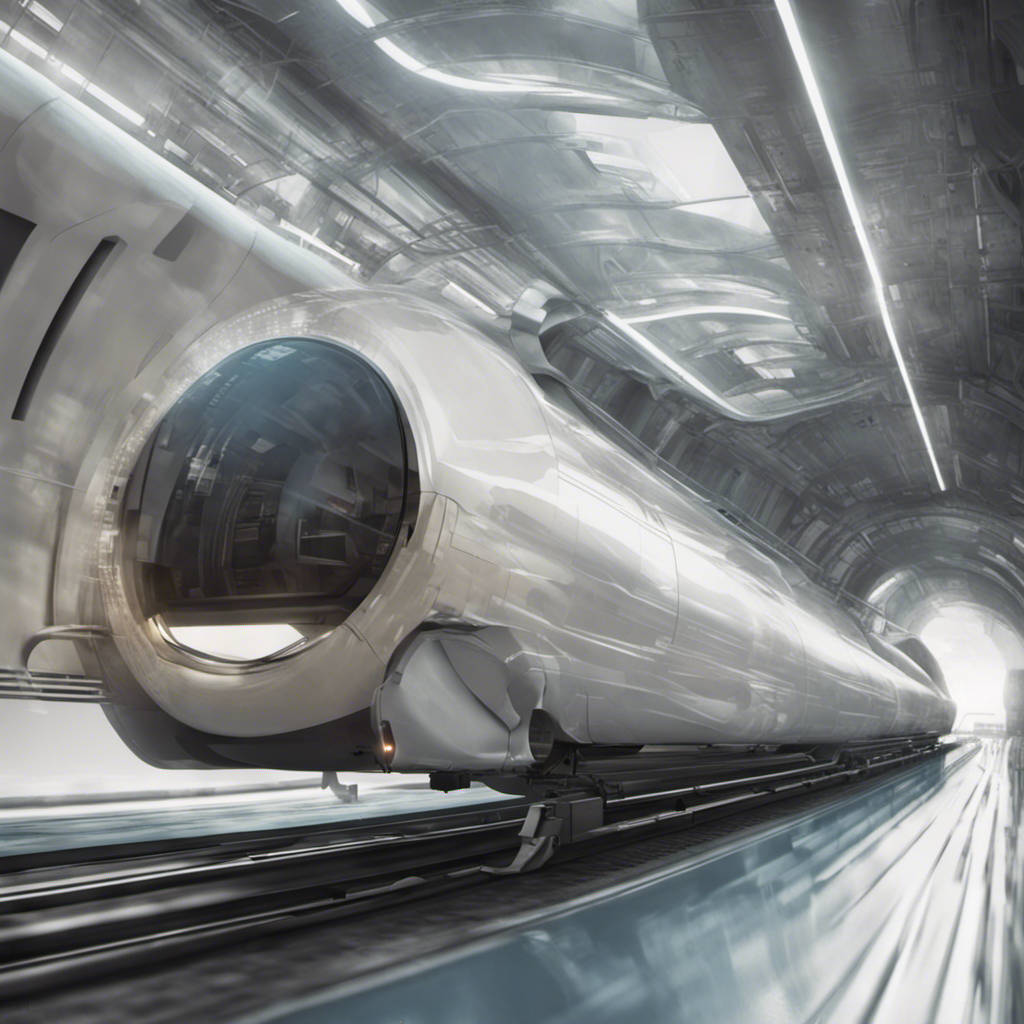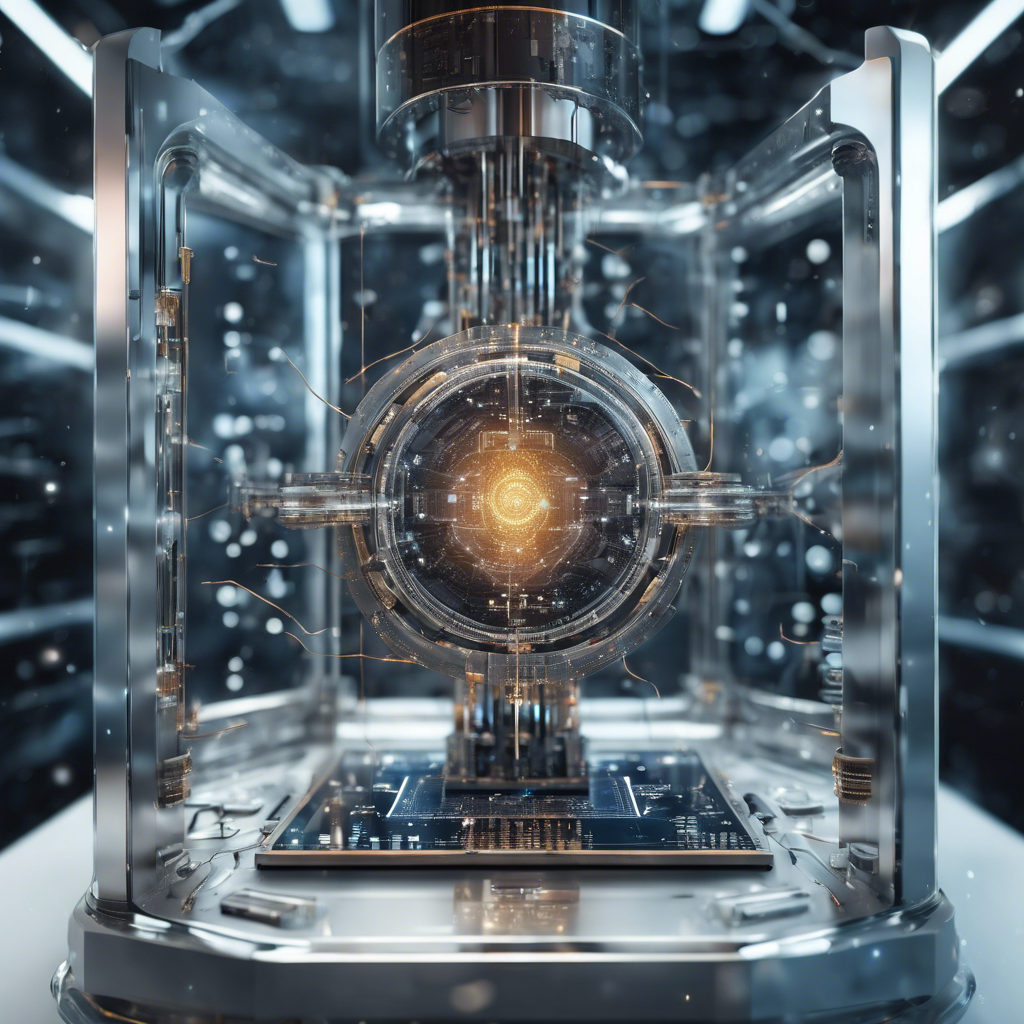
The Future of Transportation: Hyperloop Explained
In recent years, there has been a growing interest in revolutionizing the way we travel, and one concept that has generated a lot of buzz is the Hyperloop. Proposed by Elon Musk in 2013, the Hyperloop is a futuristic mode of transportation that promises to be faster, safer, and more sustainable than any other existing transportation system. In this blog post, we will delve into the fascinating world of the Hyperloop, explore how it works, its potential benefits and challenges, and discuss its future prospects.
What is the Hyperloop?
The Hyperloop is a high-speed transportation system that comprises sealed tubes through which pods, carrying passengers or cargo, travel at incredible speeds propelled by magnetic levitation and low-pressure environment. The idea behind the Hyperloop is to eliminate friction and air resistance, allowing for ultra-high-speed travel with minimal energy consumption.
How Does the Hyperloop Work?
At the core of the Hyperloop concept is a combination of three key technologies: magnetic levitation, low-pressure environment, and linear induction motors.
Magnetic Levitation
In traditional train systems, friction between the wheels and the tracks limits their speed. To overcome this limitation, the Hyperloop uses magnetic levitation. Electromagnets placed on the pods repel against magnets on the inner walls of the tubes, effectively lifting the pods and eliminating contact with the track. This levitation allows the pods to move freely, reducing energy consumption and increasing speed.
Low-Pressure Environment
The tubes in which the pods travel are maintained at a low-pressure environment, similar to flying at high altitude. By significantly reducing air resistance, the Hyperloop can achieve higher speeds with minimal power consumption. The low-pressure environment is created and maintained using air pumps and airlocks along the tube. This also eliminates the concerns of sonic booms, as the pressure is too low to propagate a shockwave.
Linear Induction Motors
To propel the pods forward, the Hyperloop uses linear induction motors, similar to those found in roller coasters. These motors generate electromagnetic fields that push and pull the pods, propelling them through the tubes at speeds of up to 700 mph or more. By controlling these magnetic fields, the Hyperloop can accelerate, decelerate, and change direction as necessary.
Potential Benefits of the Hyperloop
Speed and Efficiency
One of the most significant advantages of the Hyperloop is its remarkable speed. With the potential to reach speeds of up to 700 mph or higher, the Hyperloop could reduce travel times significantly. For instance, a journey that presently takes several hours by car or train may be completed in just a fraction of that time in a Hyperloop pod. This enhanced speed would revolutionize long-distance travel, making it possible to commute between cities that were previously considered too far apart.
Additionally, the Hyperloop’s energy efficiency is another key benefit. By incorporating technologies that minimize energy consumption, such as magnetic levitation and the low-pressure environment, the Hyperloop promises to be more sustainable and environmentally friendly compared to traditional transportation methods. Its energy consumption per passenger-mile is projected to be lower than that of planes, cars, trains, or even electric vehicles.
Safety and Reliability
Safety is a primary concern for any mode of transportation. The Hyperloop aims to address this concern by using isolated and controlled transportation environments. The sealed tubes eliminate the risks associated with accidents, as the pods are protected from external factors like inclement weather, animals, or human error. Moreover, the use of magnetic levitation minimizes the risk of collisions and derailments, further enhancing passenger safety.
Furthermore, the Hyperloop’s advanced control systems and real-time monitoring can ensure the reliability and predictability of the transportation system. This reliability would be a significant advantage for businesses transporting time-sensitive cargo, reducing delivery times, and enhancing supply chain efficiency.
Environmental Impact
The Hyperloop has the potential to profoundly impact transportation and the environment. By significantly reducing dependence on fossil fuels and adopting renewable energy sources, such as solar power, the Hyperloop offers the possibility of a greener and more sustainable future. Its low energy consumption and minimal carbon footprint make it an attractive option to mitigate climate change and reduce air pollution. Moreover, the Hyperloop’s infrastructure can be designed to minimize the impact on ecosystems and human settlements.
Challenges and Roadblocks
While the Hyperloop holds great promise, it also faces several challenges and roadblocks before becoming a mainstream reality.
Technological Feasibility
One of the biggest challenges in realizing the Hyperloop is proving its technological feasibility. The use of magnetic levitation, maintaining a low-pressure environment, and achieving ultra-high speeds safely and efficiently require significant advancements in engineering, materials science, and infrastructure construction.
Regulatory and Legal Hurdles
Introducing a new mode of transportation at such a large scale requires overcoming complex regulatory and legal hurdles. Governments and transport authorities need to establish comprehensive frameworks to ensure safety, liability, and operational standards for the Hyperloop.
Cost and Financing
Implementing a Hyperloop system involves substantial costs, including the design, engineering, manufacturing, and construction of the pods, tubes, and supporting infrastructure. Financing such a massive undertaking will require both private and public investments. Furthermore, proving the economic viability of the Hyperloop through cost analyses and business models is essential to attract investors and stakeholders.
Public Perception and Acceptance
Introducing a revolutionary transportation system will undoubtedly face challenges related to public perception and acceptance. Familiarity, trust, and concerns over safety, reliability, and disruption of existing infrastructure may impact the willingness of the general public to embrace the Hyperloop.
The Future of the Hyperloop
Despite the challenges ahead, the Hyperloop has gained significant attention and momentum since its initial proposal. Several companies are actively pursuing the development and deployment of Hyperloop systems worldwide, with prototypes and test tracks already in existence.
As advancements in technology, materials science, and infrastructure construction continue, the Hyperloop’s potential to redefine transportation grows even stronger. Ongoing research and development efforts aim to address the challenges discussed earlier and pave the way for a future where the Hyperloop is a tangible and transformative part of our lives.
The success of the Hyperloop will depend not only on technological advancements and regulatory support but also on public acceptance, market demand, and economic viability. While the full-scale implementation of the Hyperloop is not imminent, its development represents a significant step towards revolutionizing transportation and creating a more sustainable and efficient future.
Stay tuned as we continue to explore the development and advancements in the Hyperloop concept, bringing you the latest updates on this fascinating innovation.
References:
- Yildirim, Ö. S., & Favrat, D. (2018). Sustainable operation of the hyperloop high-speed transportation system. Energy Policy, 121, 112-123.
- Abdalla, H., Abdelalim, A. A., & Massmoud, M. (2019). Ambient analysis of hyperloop performance in Egypt. Case Studies on Transport Policy, 7(4), 979-991.
- Thaker, H., Raval, H. U., Dhruv, K. S., & Sudani, P. (2020). Urban Hyperloop: A Bird’s Eye View of Challenges and Solutions with other Modes of Transport. In International Symposium on Innovative Computing and Cutting-edge Technologies (pp. 366-376). Springer, Singapore.
Note: This blog post aims to provide an objective and detailed overview of the Hyperloop concept. The information provided is based on current knowledge and available references. Future developments in technology and regulatory frameworks may impact the accuracy of certain details.






